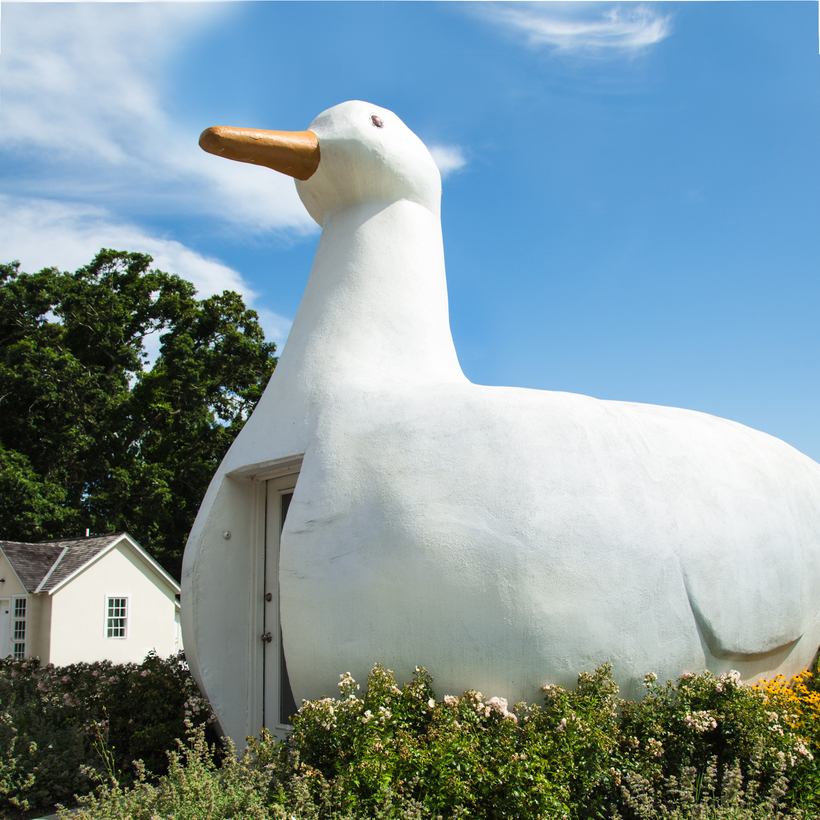In Long Island’s Suffolk County, an unofficial divide has run between west and east of the Shinnecock Canal for as long as anyone can remember.
To the east, baronial estates with green lawns and slate-colored swimming pools are hidden behind manicured privets, and town shops sell French croissants and Italian cashmere sweaters. On the other, the streets belong to blue-collar workers, as they have for generations.
But increasingly there are whispers of a chic European outpost silently cropping up just west of Shinnecock, in Hampton Bays. Could the new “It” place be on the wrong side of the tracks?
West Side Story
Hampton Bays, sometimes referred to as glitzier Southampton’s stepdaughter, has historically been considered the Hamptons’ working-class neighborhood. Originally called Good Ground, the town changed its name in 1922, to capitalize on the wealth and reputation that had already started reaching its eastern counterparts.
The new name may have confused a couple of wayward tourists, but it never worked on rich New Yorkers, who have tended to turn their noses up at their westward neighbors.
In some ways, the coronavirus has deepened the divide. Stay-at-home orders have rushed second-home purchases for whoever can afford them, upping the price of real estate across Long Island. The overarching pattern in home purchases? The richer you are, the further east you go.
Craig Amodemo, a real-estate agent from Hampton Estates Realty, based out of Westhampton Beach, said last month that the most expensive homes in Hampton Bays range in price from $1 million to $1.7 million. In nearby Sagaponack, just a 30-minute car ride to the east, homes were going for $8 million.
But a few have started heading west.
Hampton Bays has been home to landscapers, restaurant workers, cleaners, and nannies servicing the Hamptons elite for years. The town center is reminiscent of Southampton 50 years ago: diners are family-run, and farmers and fishermen own the same, battered storefronts their parents and grandparents occupied before them.
There are whispers of a chic European outpost silently cropping up just west of Shinnecock.
About 13,000 residents live in town year-round, and life there is quiet. People know one another’s names. It’s a far cry from just a few miles up Montauk Highway, where storefronts sell European designerwear and Upper East Side dames with coiffed hair meet for tea at Sant Ambroeus.

But Montauk was low-key once, too—the only people who ventured that far out were fishermen and a few surfers. Long Island’s easternmost town went from forgotten to trendy in less than a decade. And Hampton Bays may be next in line.
In 2018, developers of a luxury town-house community also began work on the restoration of the Canoe Place Inn, referring to it as a “renewed gateway into the Hamptons,” which prompted alarm among locals.
There’s also Hampton Bays’ proximity to New York City—at just 90 minutes away, it beats the commute to East Hampton or Montauk. Real-estate prices in the town were creeping up even before the pandemic; since March, they’ve risen to around 20 percent. Still-attractive prices and beautiful, unspoiled bays are not going to go unnoticed for much longer.
An employee at Uncle Joe’s Pizza and Restaurant, which has been a Hampton Bays fixture for three decades, says that since the start of the pandemic, the town has seen a huge influx of New Yorkers. “Our schools have gotten crowded, and so have our hospitals,” she tells me. And while the extra business can’t hurt, the locals aren’t thrilled. “City people tend to be rude, acting like they own everything,” she says.
Life there is quiet. People know one another’s names. It’s a far cry from just a few miles up Montauk Highway.
The Europeans got there first. Starting with the Brandolinis, an Italian noble family who set up shop in Hampton Bays 22 years ago, a small community of billionaires and industry magnates has started setting up shop north of town, on the coast of Peconic Bay. Alongside its locals, Hampton Bays is now home to the Malles (French perfume-makers), the Rothschilds, Mathilde and Bertrand Thomas (owners of skin-care brand Caudalie), Elisabeth Holder (co-owner of Parisian bakery chain Ladurée), and Estée Lauder executive Olivier Bottrie.
A homeowner of this ilk, who requested not to be named, described the place as “an American miniature French Riviera.”
This group of loosely connected families has for the most part arrived over the last decade, and built properties from scratch on land they paid pennies for. Their sprawling estates are isolated, with views onto the water. Peconic Bay is sheltered, making swims warmer and calmer than along the billowing Southampton and East Hampton oceanfront. And the beaches are almost always empty.
“Even during summer months, no one’s ever there,” says Louise Malle, daughter of the perfumer Frédéric Malle. “It’s like our own small, paradisiacal corner.” In Hampton Bays, no one is rushing to SoulCycle or wearing lip gloss to the beach, and a local meal seldom requires a reservation. “What we have is unique,” Malle says.
How long until the clam chowder becomes lobster bisque and Uncle Joe’s restaurant a Sant Ambroeus?
Elena Clavarino is an Associate Editor for AIR MAIL


